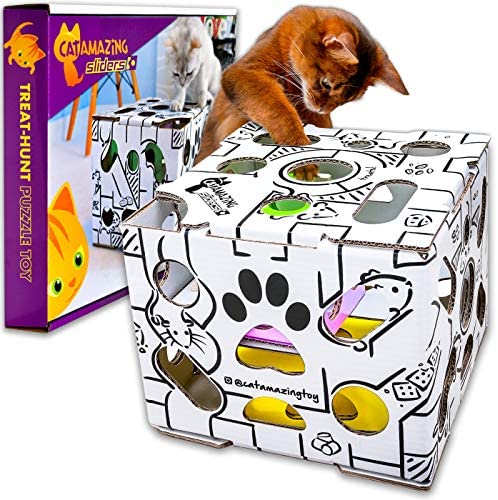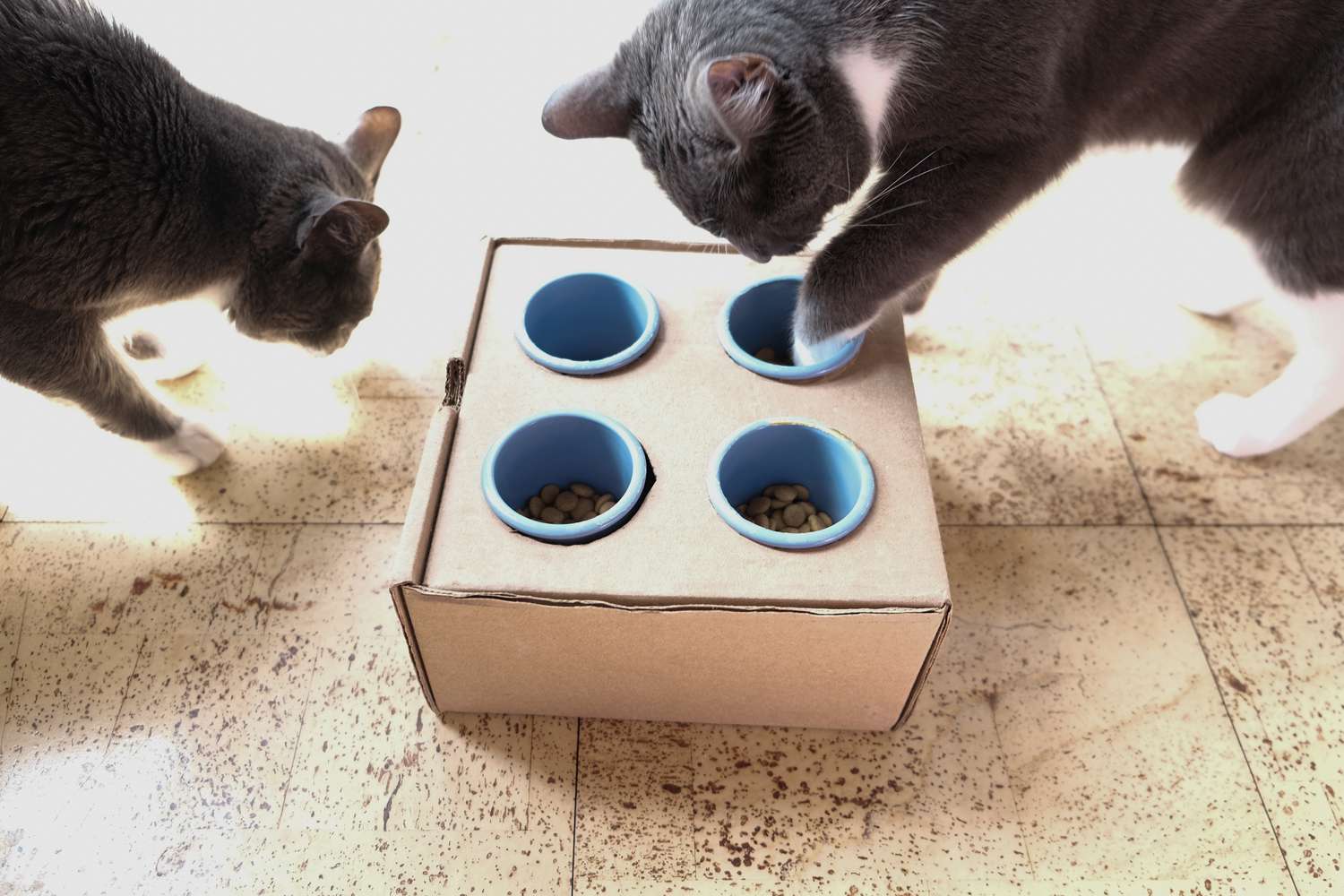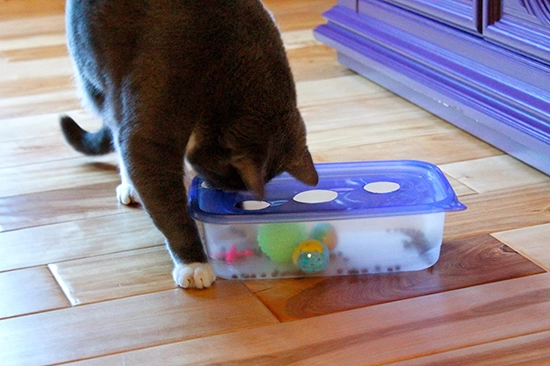Puzzle boxes
Cats are curious animals that enjoy exploring their surroundings and engaging in play. Toys are essential for keeping cats active, stimulated, and entertained. Puzzle boxes are a unique type of cat toy that can provide hours of entertainment for your feline friend. Puzzle boxes come in a variety of shapes and sizes and are designed to challenge your cat’s natural hunting instincts. In this article, we will explore the benefits of puzzle boxes for cats, different types of puzzle boxes available, how to train your cat to use a puzzle box, safety considerations when using puzzle boxes, making your own puzzle boxes, recommended treats to use with puzzle boxes, cleaning and maintaining puzzle boxes, and other interactive toys for cats.
Benefits of Puzzle Boxes for Cats
Puzzle boxes are beneficial for cats in several ways. Firstly, they provide mental stimulation, which is essential for a cat’s well-being. Cats are intelligent creatures that require mental stimulation to keep their minds sharp. Puzzle boxes provide a challenge for cats, requiring them to use their problem-solving skills to figure out how to open the compartments and find the hidden treats inside.

Secondly, puzzle boxes can help prevent boredom and reduce destructive behavior. When cats become bored, they may engage in destructive behavior such as scratching furniture, chewing on cords, or knocking things over. Puzzle boxes provide a safe and fun outlet for your cat’s energy and can help prevent destructive behavior.
Lastly, puzzle boxes can help your cat maintain a healthy weight. Obesity is a common problem among indoor cats, which can lead to health issues such as diabetes, arthritis, and heart disease. Puzzle boxes can help encourage your cat to engage in physical activity, which can help them burn off excess calories and maintain a healthy weight.
Different Types of Puzzle Boxes for Cats
There are several different types of puzzle boxes available for cats, each with their unique features and designs. Here are some of the most common types of puzzle boxes for cats:
Hide-and-seek puzzle box: This type of puzzle box has a series of compartments that your cat needs to figure out how to open to find the hidden treats inside.
Maze puzzle box: This type of puzzle box has a maze-like design, requiring your cat to navigate through the maze to find the treats.
Sliding puzzle box: This type of puzzle box has sliding compartments that your cat needs to move around to access the treats.
Puzzle feeders: These are puzzle boxes that double as a feeding station, requiring your cat to figure out how to access its food.
Training Your Cat to Use a Puzzle Box
Training your cat to use a puzzle box requires patience and persistence. Here are some tips to help you train your cat to use a puzzle box:
Start with an easy puzzle box: Choose a puzzle box with a simple design to start with. This will help your cat get used to the idea of using a puzzle box.
Use a treat your cat loves: Use a treat that your cat loves and is motivated to get. This will help encourage your cat to use the puzzle box.
Show your cat how to use the puzzle box: Demonstrate to your cat how to use the puzzle box by showing them how to open the compartments and find the treats inside.
Be patient: It may take some time for your cat to figure out how to use the puzzle box. Be patient and don’t give up.
Increase the difficulty level: Once your cat has mastered an easy puzzle box, gradually increase the difficulty level by choosing a more challenging puzzle box.
Safety Considerations When Using Puzzle Boxes for Cats
When using puzzle boxes for cats, it’s essential to consider their safety. Here are some safety considerations to keep in mind:
Choose puzzle boxes made from safe materials: Choose puzzle boxes made from non-toxic materials, such as BPA-free plastic, or natural materials like wood or bamboo.
Supervise your cat: Always supervise your cat when using a puzzle box to ensure they don’t accidentally ingest any parts of the toy.
Don’t leave the puzzle box out all the time: It’s important to keep the puzzle box out of reach when not in use to prevent your cat from playing with it unsupervised.
Consider your cat’s age and abilities: Choose a puzzle box appropriate for your cat’s age and abilities. Older cats or cats with mobility issues may find certain puzzle boxes too difficult.
Making Your Own Puzzle Boxes for Cats

If you’re feeling crafty, you can make your own puzzle boxes for your cat. Here’s how:
Choose a material: You can use materials like cardboard, plastic, or wood to make your puzzle box.
Design the compartments: Create a design for the compartments using a ruler and pencil. Make sure the compartments are big enough to hold treats but small enough to be challenging for your cat to open.
Cut the material: Cut the material into the desired shape using a utility knife or scissors.
Assemble the puzzle box: Assemble the puzzle box using glue or tape.
Add treats: Place treats inside the compartments and let your cat figure out how to open them.
Recommended Treats to Use with Puzzle Boxes
When using puzzle boxes for cats, it’s important to use treats that are safe and healthy for your cat. Here are some recommended treats to use with puzzle box:
Freeze-dried meat or fish: Freeze-dried meat or fish is a healthy and protein-packed treat that most cats love.
Catnip: If your cat loves catnip, you can sprinkle some inside the compartments of the puzzle box.
Soft treats: Soft treats, like small pieces of cooked chicken or tuna, are a great option for cats who prefer softer treats.
Cleaning and Maintaining Puzzle Boxes for Cats
Regular cleaning and maintenance are essential to keep your puzzle box safe and hygienic for your cat. Here are some tips for cleaning and maintaining puzzle box for cats:
Clean the puzzle box regularly: Clean the puzzle box regularly with soap and warm water.
Dry the puzzle box thoroughly: After cleaning, make sure to dry the puzzle box thoroughly to prevent mold or mildew growth.
Replace damaged puzzle boxes: If the puzzle box becomes damaged, replace it to prevent your cat from ingesting any loose parts.
Other Interactive Toys for Cats
In addition to puzzle boxes, there are several other interactive toys available for cats. Here are some examples:
Feather wands: Feather wands are a classic cat toy that most cats love. They provide a fun way to engage in play and exercise.
Laser pointers: Laser pointers are a popular interactive toy for cats. However, it’s important to use them safely and not shine the laser directly into your cat’s eyes.
Catnip toys: Catnip toys are toys infused with catnip that most cats find irresistible. Puzzle boxes are a unique and stimulating toy that can provide numerous benefits for your cat’s mental and physical well-being. By choosing the right puzzle box for your cat, training them to use it, and taking proper safety precautions, you can provide your cat with hours of entertainment and help them maintain a healthy lifestyle. Don’t be afraid to get creative and make your own puzzle box, and remember to use safe and healthy treats. With puzzle boxes and other interactive toys, you can help your cat stay active, engaged, and happy.
In summary, these toys are a great way to keep your cat mentally stimulated and engaged. They provide a fun challenge that can help reduce boredom and prevent destructive behaviors like scratching and chewing. However, it’s important to choose a puzzle box that is safe and appropriate for your cat’s age and abilities and to always supervise them during play.
When training your cat to use a puzzle box, be patient and encouraging. Use positive reinforcement and treats to reward them for their efforts, and gradually increase the difficulty of the puzzle as they become more skilled. It’s also important to consider your cat’s individual preferences and adjust the puzzle box accordingly.
In addition to these things, there are plenty of other interactive toys available for cats. Feather wands, laser pointers, and catnip toys are just a few examples. These toys can provide additional opportunities for play and exercise and can help strengthen the bond between you and your cat.
When using any interactive toy, always consider safety and cleanliness. Regularly clean and maintain the toy to prevent the buildup of bacteria and mold, and always supervise your cat during play to prevent any accidents or injuries.
In conclusion, puzzle boxes and other interactive toys are a great way to keep your cat happy, healthy, and engaged. By choosing the right toys and taking proper safety precautions, you can provide your cat with hours of entertainment and help them maintain a healthy lifestyle.

